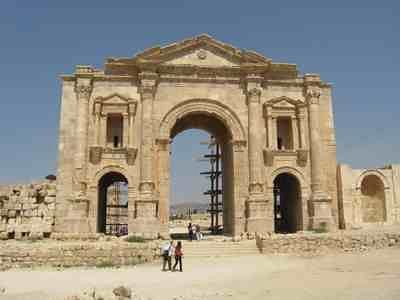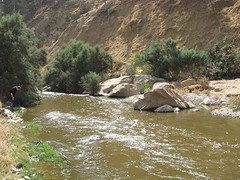Mideast Log 2007-3
Each morning I read the Jordan Times in English. It is my main print news connection here in Jordan. The paper reflects a pride in the kingdom and the efforts of King Abdullah to raise the living standards of Jordanians. A recent Pew Research poll also shows a decline in the number of Jordanians who support suicide bombings and work of Al Queada. The hotel bombings of two years ago turned many against the idea of suicide attacks upon innocent civilians. Quite a positive development.
Reading the paper here offers an Arab view of world affairs. The dateline on a story about the peace process says it comes from "Occupied Jerusalem". People have long memories in this part of the world.

We traveled up to Jerash this afternoon to view the ruins of the ancient Roman city. Jerash was a key city on the eastern edge of the empire and was built up during the first and second century to a fair size, between 20,000 to 25,000. It was one of cities of the Decapolis mentioned in the Gospels (Gerasa). Scholars say it is one of the best preserved cities from the period. It contains an amphitheater and the remains of several temples to various gods and goddesses.
What is most impressive in Jerash is the main city center and avenue (Cardo) running north. This well preserved center was the hub of city life and provided a model for Constantine when he laid the outlines of his new city, Constantinople in the fourth century.
The Roman Emperor Hadrian visited the city in AD 129-130. In his honor the people of the city built the monumental Hadrian's Arch on the south side of the city.
Time, the ebb and flow of empires and earthquakes took a toll on the city and by the seventh century the city was deteriorating. In 747 a series of earthquakes brought the city to its knees. The city lay deserted for a thousand years. It was rediscovered at the beginning of the nineteenth century. Today only ten percent of the city has been excavated and there is ongoing work to dig and restore the site. Sometimes called the "Pompeii of the East" it is a window into the ancient Roman city.
We also stopped by the River Jabock-mentioned in Genesis as the location of the all night struggle between Jacob and an Angel. 
It was a warm day and gave us all a workout during the tour.
